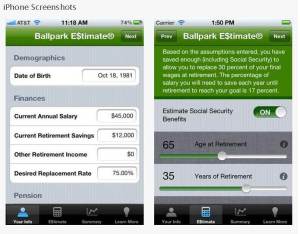Most private-sector employers that automatically enroll their 401(k) participants do so at a default rate of 3 percent of pay,(1) a level consistent with the starting rate set out in the Pension Protection Act of 2006 as part of its automatic enrollment safe harbor provisions—but it’s a rate that many financial experts acknowledge is far too low to generate sufficient assets for a comfortable retirement.
EBRI has previously modeled the impact of automatic enrollment(2) (see “The Impact of Automatic Enrollment in 401(k) Plans on Future Retirement Accumulations: A Simulation Study Based on Plan Design Modifications of Large Plan Sponsors,” online here). In the most recent research, using EBRI’s proprietary Retirement Security Projection Model® (RSPM), the impact of raising the default contribution rate to 6 percent for younger workers (who might have 31–40 years of simulated 401(k) eligibility) in plans with automatic enrollment and automatic escalation was evaluated to see how many would be likely to achieve a total income real replacement rate of 80 percent at retirement.
 As noted earlier, the higher starting default made a significant impact; more than a quarter of those in the lowest-income quartile who had previously NOT been simulated to have reached the initial replacement rate target (under the actual default contribution rates) would reach the target as a result of the increase in raising the starting deferral rate to 6 percent of compensation. Even those in the highest-income quartile would benefit, although not as much.(3)
As noted earlier, the higher starting default made a significant impact; more than a quarter of those in the lowest-income quartile who had previously NOT been simulated to have reached the initial replacement rate target (under the actual default contribution rates) would reach the target as a result of the increase in raising the starting deferral rate to 6 percent of compensation. Even those in the highest-income quartile would benefit, although not as much.(3)But what about when those workers change jobs: Would they “start over” at the new employer’s starting default rate, or would they “remember” and carry their higher rate of savings at their prior employer into the new plan? The modeling actually looked at both those scenarios,(4) and found that 15–26 percent of the lowest-income quartile that would otherwise not have reached the target threshold under their existing plan-specific deferral rates would now do so at the 6 percent level, as would 13–22 percent of those in the highest-income quartile.
In life, “starting over” can be a painful, awkward process, as anyone who’s restarted a career or home can attest. But, depending on where you are starting from—and what kind of start you make—it can also be an opportunity.
- Nevin E. Adams, JD
(1) Which, it should be noted, also contemplates an annual 1 percent automatic escalation of that starting rate, up to a designated level. Neither the automatic enrollment nor automatic escalation provisions are mandated by the legislation, unless the plan sponsor wants to take advantage of the PPA safe harbor protections.
(2) One point that had been made clear in previous research was that some workers who were defaulted into a 401(k) auto-enrollment (AE) plan (without auto-escalation provisions) would continue to contribute at the defaulted contribution rate chosen, typically in the range of 3 percent of compensation. Traditionally, and in the absence of these AE provisions, many workers eligible for workplace retirement savings plans have voluntarily elected to start contributing at a 6 percent rate (a point commonly associated with the level of matching contribution incentive provided by employers). However, some participants in AE plans—who otherwise might have voluntarily chosen to participate at a higher contribution level—instead might simply allow their savings to start (and remain) at the default rate. As a result, they were likely contributing at a lower rate than if they had been working for a plan sponsor offering a voluntary enrollment (VE) 401(k) plan AND had made a positive election to participate.
(3) The modeling assumed actual plan-specific default contribution rates with (1) an automatic annual deferral escalation of 1 percent of compensation; (2) that employees opted out of that auto-escalation at the self-reported rates from the 2007 Retirement Confidence Survey findings; (3) that they “started over” at the plan’s default rate when they changed jobs and began participation in a new plan; and (4) that the plan imposed a 15 percent cap on employee contributions.
(4) Among other criteria, the modeling also considered auto escalation rates of 1 percent and 2 percent.



